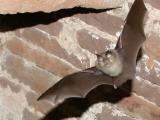Scientists today reported finding the Middle East respiratory syndrome coronavirus (MERS-CoV) in camels in Egypt, adding to the evidence suggesting that camels may be a source of human infections.
Writing in Emerging Infectious Diseases, a team from Hong Kong, Egypt, and the United States said they collected nasal swabs from 110 adult dromedary camels at Egyptian abbatoirs on 12 occasions from June to December 2013. They also took serum samples from 52 of the animals.
By polymerase chain reaction (PCR), four (3.6%) of the camels tested positive for infection with MERS-CoV as defined by the World Health Organization, the authors said. Using PCR products, they produced a nearly full-length MERS-CoV genome from one of the isolates, which allowed them to determine that it was 99.2% to 99.5% similar in its nucleotides to the virus from the first human MERS-CoV case identified in 2012.
Using a neutralization assay, the team also found that 48 (92.3%) of the 52 camel serum samples contained antibodies to MERS-CoV or a very similar virus. But serum samples from 179 workers at the abbatoirs all tested negative.
Role of camels
The authors say their findings confirm that MERS-CoV infects dromedary camels and that the camel virus is genetically very similar to MERS-CoV in humans.
"The detection of MERS-CoV in nasal swab specimens of camels in 2 of 12 sampling occasions in abattoirs, taken together with the high seropositivity to MERS-CoV in dromedaries previously reported, supports the contention that MERS-CoV infection is common in dromedaries," they write.
They note that the study adds to the plausibility of the view that camels can pass the virus to humans, but the lack of serologic evidence of infection in the abbatoir workers suggests that such transmission is uncommon.
The scientists write that the camels that tested positive for MERS-CoV were imported from Sudan or Ethiopia. Their findings, they say, raise the possibility of human MERS cases outside the Arabian Peninsula. Thus far all cases have originated on or near the Arabian Peninsula or have direct or indirect links to the region.
The new study comes on the heels of one indicating that MERS-CoV is widespread in camels in Saudi Arabia and that a MERS-CoV–like virus existed in the country's camels as long ago as 1992.
See also:
Feb 27 Emerg Infect Dis report
Feb 25 CIDRAP News story "Study: MERS-CoV may have been in Saudi camels 22 years ago"




















